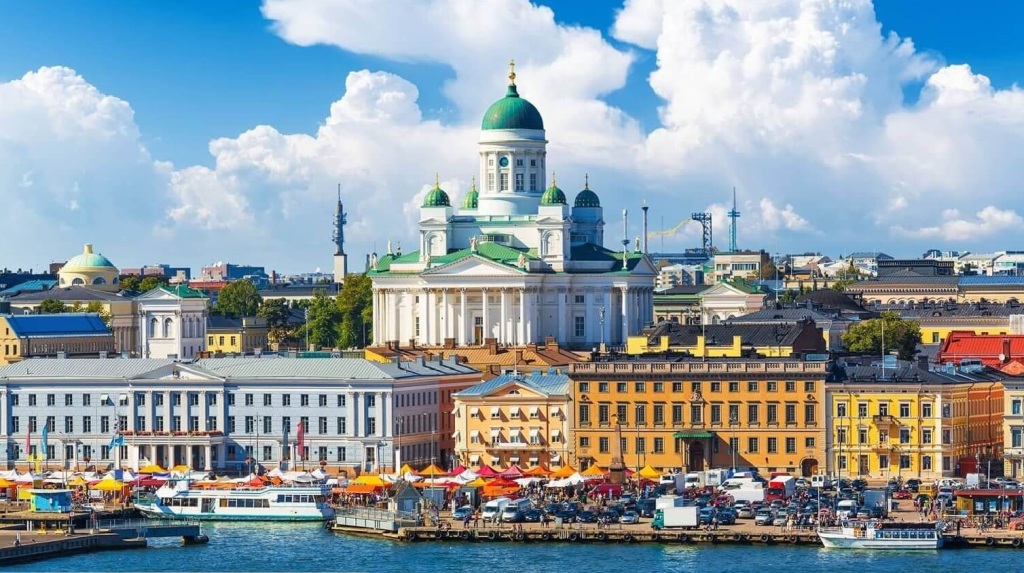Finland is a land where dense boreal forests, countless lakes and long winter nights gave rise to a rich tapestry of myths and legends. Passed down through generations by oral poets and folk singers, these stories blend elemental forces, heroic quests and local spirits into a living tradition that still shapes Finnish identity today.
Creation and Cosmogony
In the oldest Finnish tales the world is born from a cosmic egg laid by a waterfowl hovering over a boundless sea. From its cracked shell emerge sky and earth, and the primordial hawk soars above. A later creation myth, woven into the Kalevala epic, tells of the celestial maiden Ilmatar, impregnated by the wind god, who births the world after hatching cosmic Baltic eggs on her knee. This fusion of elemental air, water and bird imagery underscores a world fashioned from nature’s raw forces.
The Kalevala and National Epic
Compiled in the 19th century by Elias Lönnrot from runo-singers across Karelia, the Kalevala assembles over twenty thousand lines of verse into Finland’s national epic. Its hero Väinämöinen, a bearded sage-bard, wields magic songs that shape rivers and mountains. Ilmarinen, the divine smith, forges the Sampo—an enchanted mill granting endless prosperity—sparking quests and conflicts with Louhi, the witch-queen of the northern realm Pohjola. Lemminkäinen, the daring adventurer, undertakes perilous journeys to win a bride, even braving the fiery lake and Tuonela, the land of the dead, only to be restored by his mother’s devotion. These intertwined adventures form Finland’s mythic backbone.
Major Deities and Heroes
Before Christianization, Finnish paganism centered on Ukko, the thunder god who commands storms and fertility. He rides the sky in a chariot of lightning, his hammer striking drops of rain. Ukko’s wife Akka embodies earth’s nourishing aspects. Tapio, lord of forests, ensures successful hunts, while his wife Mielikki protects wild game. Pellervo and his son Pekko preside over fields and barley, blessing harvests. Beneath these chief deities are local guardians—haltijas—spirits of house, water, forest and hearth, invoked to safeguard travellers, homes and livestock.
Forest and Nature Spirits
Finnish folklore teems with woodland beings. The maahiset—earth dwellers—are leprechaun-like gnomes who favor hidden mounds; disturbing their dwellings invites misfortune. The hiidet lurk in bogs and rocky outcrops, malevolent giants capable of shapeshifting. Tonttu, the household elf, lives behind the stove, rewarding kindness with bountiful hearths but meting out mischief if insulted. Collective reverence for these spirits arises from a deep bond with nature and the belief that every grove, spring and ridge harbours a sentient essence.
Water and Underworld Beings
Where forests end, lakes and rivers flow, guarded by the Näkki or water saint, a seductive spirit luring unwary children and fishermen beneath the surface. The loathsome Iku-Turso dwells in the Baltic depths, a multi-headed sea monster whose appearances foretell storms. Beneath the north lies Tuonela, the realm of the dead, crossed on a black swan or ferried by the raven-haired boatman. Souls trapped there wander dark marshes until summoned by a shaman’s incantations or rescued by heroic mothers, as when Väinämöinen’s mother reassembles Lemminkäinen’s dispersed body.
The Sacred Bear
The bear (karhu) reigns as Finland’s most venerated animal, once worshipped in ceremonial hunts. Its true name was never spoken—euphemisms like otso, kontio or metsäjänne protected hunters from angering the spirit within. After a successful kill, rituals of apology and gift-offering ensured the bear’s soul would return another spring. This deep respect for the bear reflects kinship with wild nature and the belief in ancestral continuity.
Sámi Mythological Traditions
In the Arctic north the indigenous Sámi people preserved a distinct shamanic lore. Their noaidis—spiritual healers—entered trance states to commune with nature spirits, guiding souls and curing ailments. Reindeer embody the Sámi’s sacred lifeline, while the sun goddess Beaivi brings summer’s warmth and heals mental illness. Drum-songs invoke these powers, weaving a spiritual geography of spirits in mountains, rivers and forests distinct from southern Finnish tales.
Folk Creatures and Household Spirits
Beyond grand myths, everyday folk tales recount bears in human form, foxes tricking hunters, and shapeshifting women of the woods. Will‑o’-the-wisps dance on marshes to mislead travellers. Households display wooden kutsunut stumps to ward off sprites, and midsummer bonfires scare away evil. Children learn of Pukki—a horned Christmas goat delivering gifts or mischief—blending older Yule-time spirits with modern Santa imagery.
Modern Interpretations and Legacy
Finnish myths live on in literature, music and art. Sibelius’s tone poem “Kullervo” evokes tragic heroism from the Kalevala. Contemporary writers reimagine ancient figures in novels and graphic art. Folk festivals celebrate runo poetry and shamans’ songs. Even heavy metal bands draw on Väinämöinen’s magic, reflecting sisu—the Finnish spirit of perseverance. Saunas, reindeer safaris and Arctic tours offer living connections to mythic landscapes where these legends arose.
Finland’s myths and legends remain vibrant threads in a modern society, reminding Finns and visitors alike of a worldview rooted in respect for nature’s power, the interwoven fate of humans and spirits, and the resilience of storytellers who sang the world into being.
- Abkhazia
- Belgium
- Tennant Creek 1988: the most powerful earthquake in Australia’s history
- Holiday in Monaco
- The Wettest Places on Earth: Where the Sky Almost Never Dries
- Liberation of Belarus from the Nazis
- Honduras
- Barbados
- Mongolia
- Los Angeles
- Pirate places of the world: where to travel for seafaring legends
- Turtle facts
- A quick look at Lucknow: one day in the Uttar Pradesh capital
- Sahalin
- Tourism crime in Amsterdam: how to avoid becoming a victim
- Lofoten Islands
- Pirate treasure hunting around the world: where to look without breaking the law
- Namibia sees almost double-digit growth
- Kyrgyzstan
- Haruto Takahashi Found Pirate Treasure in Madagascar











